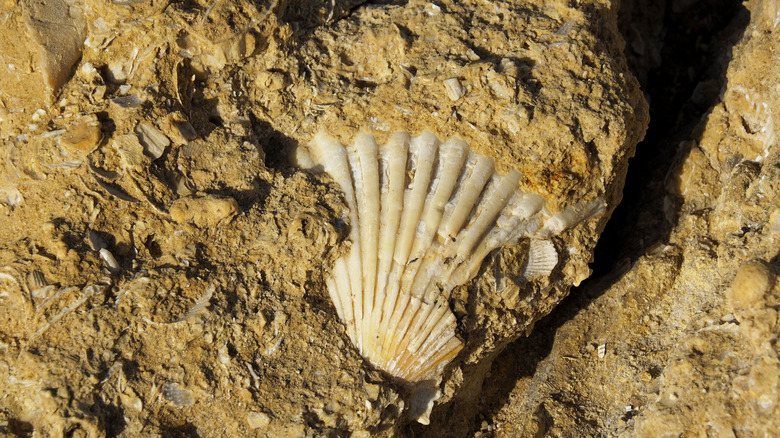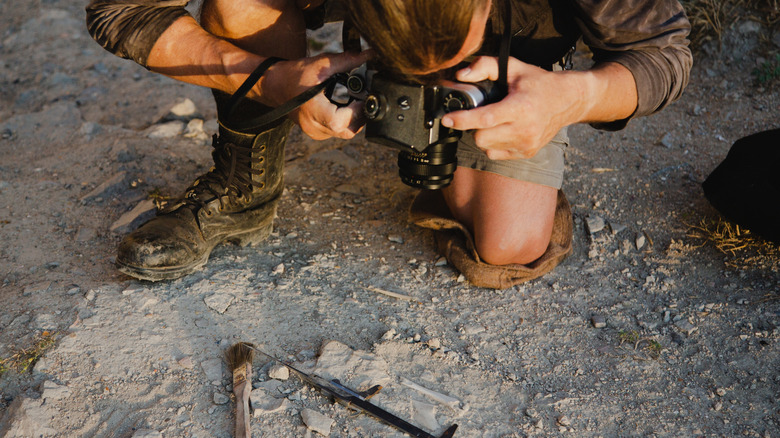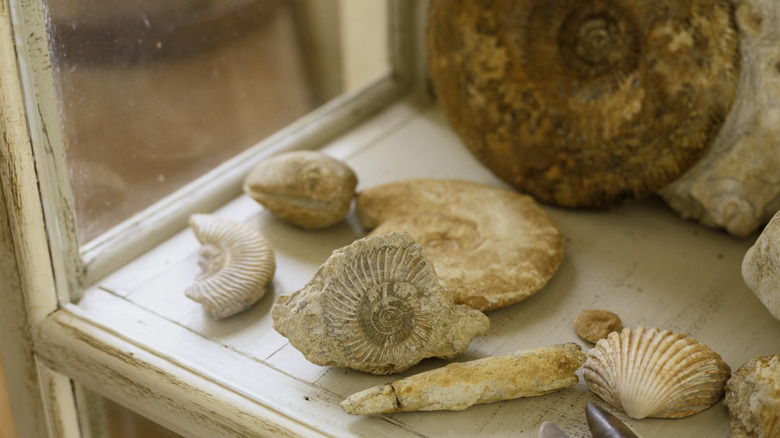What It Means To Find A Fossil In Your Garden (& The First Thing You Should Do)
Imagine this: You have an idea for a stunning flower garden and you get to work digging, only to come across something you never thought you would — a fossil. It's seemingly a worthwhile find; however, your thoughts are all over the place, creating uncertainty about the next steps. When you come across a prehistoric relic in your garden, it is an exciting and possibly even scientifically significant or valuable discovery.
The first thing you should do if you unearth a fossil in your backyard is to avoid touching your discovery. Instead, you need to document the find. It's also helpful to brush up on some fossil knowledge. Fossils are the preserved imprints or remains of ancient species of plants and animals. To identify them, you need to learn about the basic characteristics of each and have the right tools on hand.
Fossils can be found all over the U.S. and can come in all shapes: a spiral-shaped ammonite; a trilobite resembling a large, flat beetle; clam-like brachiopods and bivalves; part of a tree trunk; or feathery, fern-like fronds. The first step in identification is examining your find in situ with a magnifying glass and a bright light. After identifying it, it's crucial to understand your rights as the landowner as well as the best way to display your find.
Don't touch the fossil: Document your find instead
Just like when you spot a turtle in your yard, do not touch or remove the fossil, no matter how tempting it is. Fossils can be fragile, and the soil or rock they're embedded in can contain vital clues about the life of the animal or plant for scientists. One wrong move can not only destroy the fossil but also erase millennia of context. Instead, grab your smartphone or camera, a ruler, and a notepad and pen.
First, use the ruler to measure the length, width, and depth of the fossil, taking photos of each measurement (with the ruler in the frame). Then, take a step back and snap some photos of the surrounding area. On your notepad, jot down any characteristics of the fossil that stand out, including the size, color, and patterns. Describe the matrix you found it in, too — that is, the soil, sand, mud, or rock surrounding the fossil.
Though unlikely since invertebrate and plant fossils are common in much of the U.S., this could be a once-in-a-lifetime find. As such, let the entire family join in on the fun by printing out a few Natural History Museum fossil identification worksheets. You'll create memories and give your kids an education in prehistoric life. Wildlife, weather, and landscaping activities can damage a fossil. If you think the find is significant enough that an expert may want to see the fossil in person, cover the area with a secure covering.
Understand your rights, and display your awesome find
Luckily for you, fossils found on your property are legally yours, and you can do what you want with them, whether that is to keep, sell, or even donate them. However, if you need help identifying a fossil or believe that your find may have some significant value, reach out to local experts, like a university, museum, or paleontology research institute, to learn more about the type of fossil you have and its age. It's also important to know that there are strict rules and regulations when it comes to finding fossils on public or federal land. Depending on the type of fossil and the amount you find, you may need a permit for collection.
If you decide to post your fossil find on social media, be mindful that poachers look for such uploads. Refrain from adding your location to your post, or adjust your privacy settings to protect your discovery and yourself.
Now that you have your fossils and have decided to keep them, you need to proudly display your discoveries. One of the most common ways is to use a curio cabinet in your home to admire it daily and show it off to guests. Don't forget to add name plaques and stands to make it even more impressive. Another creative way to showcase these prehistoric relics is to suspend them on a wall, whether that is on a shelf, with brackets, or in a shadow box.


